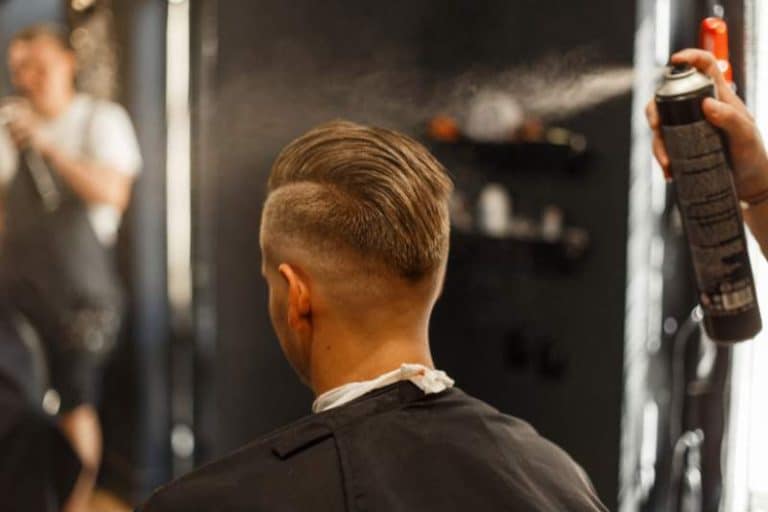Mouth Piercings: Everything You Need To Know
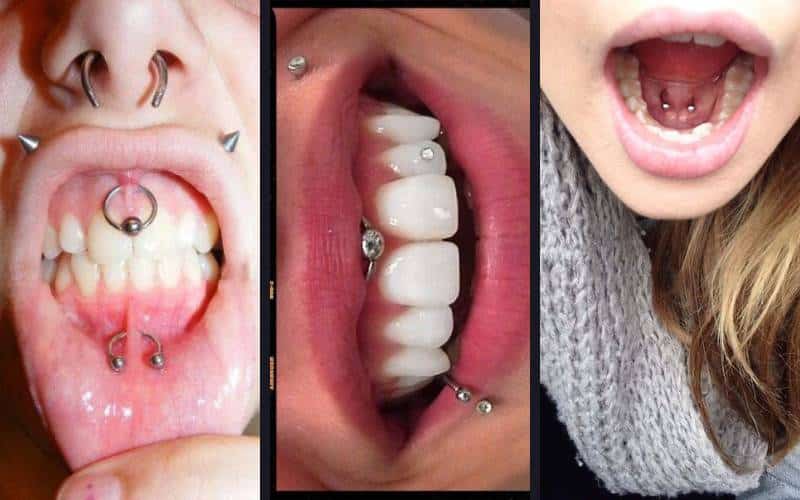
When thinking about mouth piercings, the mind often gravitates toward tongue or lip piercings. However, the realm of possibilities extends far beyond these two options. While it’s a good starting point for anyone, especially women, a diverse array of stylish and unique opportunities awaits exploration. This comprehensive guide, crafted by our experts, aims to broaden your perspective, unveiling piercing options you might not have considered. Here, we provide insights into pricing, aftercare, and potential risks, offering a holistic view to guide you in discovering the piercing variant you may have unknowingly yearned for!
Types of mouth piercings
Having identified the primary categories of mouth piercings, let’s delve into each one:
Lip Piercings: Encompassing any piercing around the lip area, this category offers diverse options for personal expression.
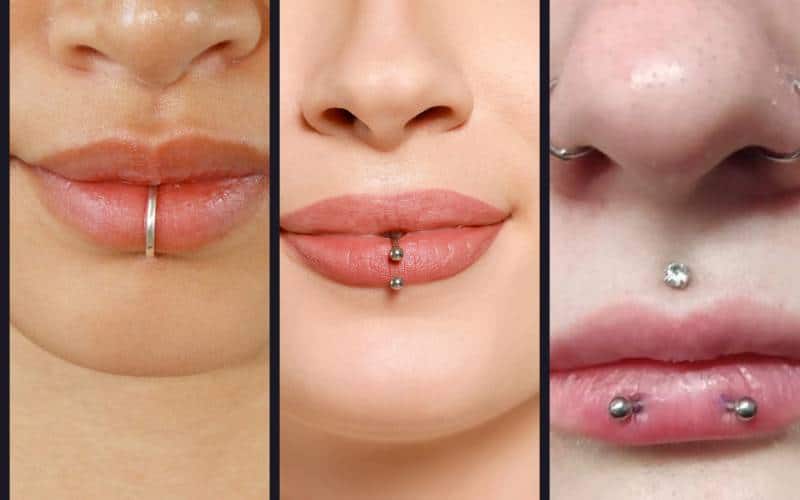
Tongue Piercings: This includes piercings within the main tissue of the tongue or underneath, presenting variations that cater to individual preferences.
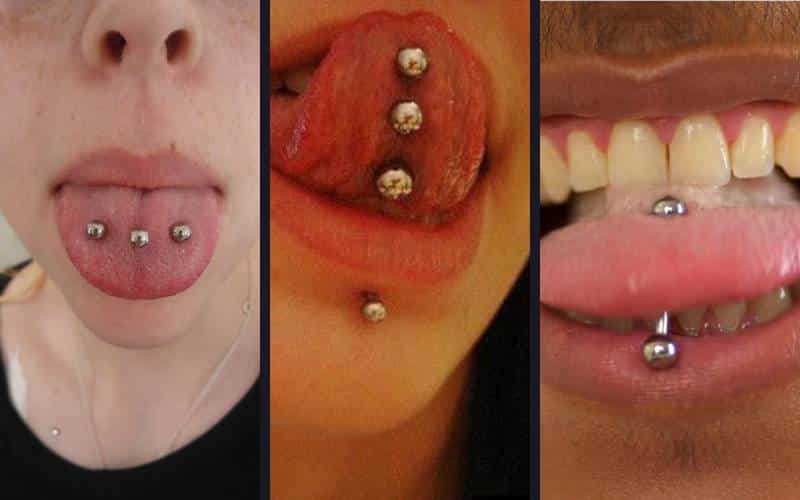
Teeth Piercings: Dental accessories professionally added to the front of your teeth fall under this category, adding a unique touch to your smile.
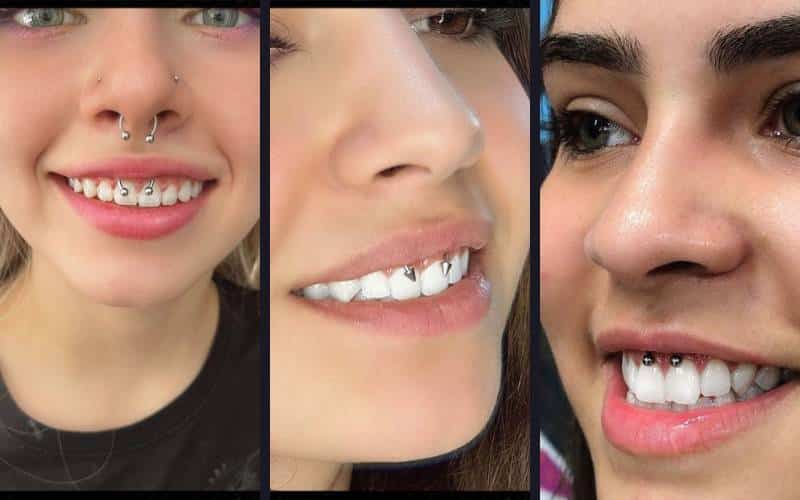
While the names may seem self-explanatory, each category boasts numerous variations tailored to enhance individual styles and preferences.
Average mouth piercing price
The expense of a mouth piercing, exclusive of jewelry, typically ranges from $30 to $100. The specific cost depends on factors such as the placement and complexity of the procedure. It’s important to note that double piercings will naturally incur higher costs.
Mouth piercing materials
As you contemplate various mouth piercings and their placements, prioritize your safety and well-being. Choosing the appropriate jewelry material is crucial for this reason. Consider the following options:
Medical Steel: Among the most common and safest choices for oral piercings.
Titanium: Ideal for those prone to allergic reactions, as it is hypoallergenic and resistant to infections.
Platinum: While one of the more expensive options, platinum is a reliable piercing material. Experts recommend using it after the piercing has fully healed.
Lip Piercing Inside
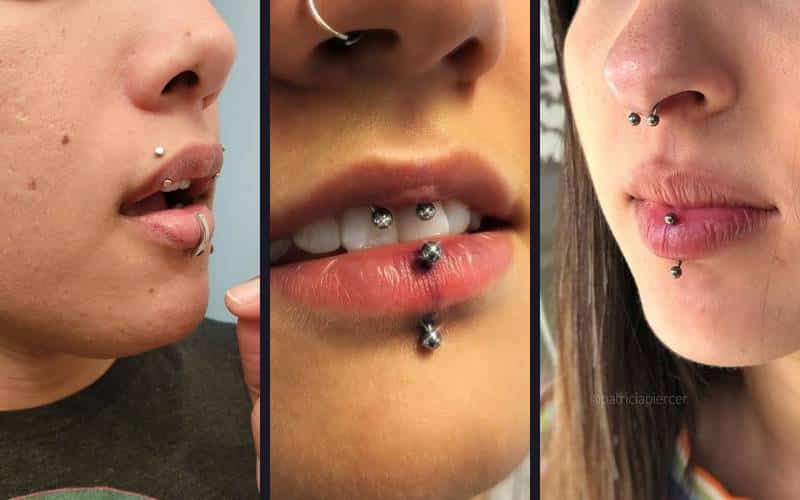
When contemplating lip piercings, it’s commonly assumed that everything visible on the outer lip falls into this category. While this assumption holds partially true, there are also variations of lip piercings on the inside. Here’s a list of external lip piercings:
Angel Bites Piercing: A double piercing on the upper lip.
Dahlia Piercing: Named after the Black Dahlia murder victim, it involves piercing the opposite corners of the mouth.
Dolphin Bites Piercing: A double piercing in the middle of the lower lip.
Jestrum Piercing: Piercing through the center of the upper lip.
Labret Piercing: Located below the lower lip, in the center.
Madonna Piercing: The opposite of the Monroe piercing.
Medusa Piercing: Piercing the cupid’s bow.
Monroe Piercing: Piercing the left upper part of the lip.
Shark Bites Piercing: A double piercing under the lower lip on both sides, creating four holes in total.
Snake Bites Piercing: A double piercing on each side of the lower lip.
Spider Bites Piercing: A double piercing on one side of the mouth, under the lower lip.
Vertical Labret Piercing: Piercing the center of the lower lip, allowing the jewelry to pass through the soft tissue.
Frenulum Piercing

If external mouth piercings don’t suffice, you can explore lip frenulum piercings as an alternative. Once again, there are several variations to consider:
Upper Frenulum Piercing: This involves piercing the connective tissue that links your upper lip and gums, often referred to as smiley mouth piercings.
Lower Frenulum Piercing: In contrast to the smiley piercing, the frowney piercing targets the connective tissue between the lower lip and gums.
Tongue Piercing

An alternative and widely embraced mouth piercing is the tongue piercing. However, don’t limit yourself to the conventional middle-tongue piercing, as there are various options to explore. Consider the following types:
Midline Tongue Piercing: A classic piercing located in the center of your tongue.
Horizontal Tongue Piercing: In this variation, the tip of the tongue is pierced horizontally.
Side/Venom Tongue Piercing: This piercing involves piercing both sides of the tongue in the middle.
Under tongue piercing
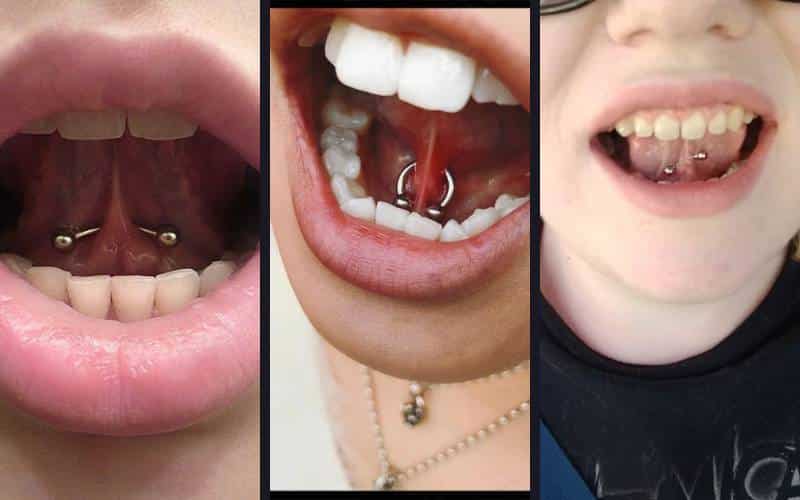
Source: Pinterest.com
Let’s shift our focus to under-tongue piercing:
Tongue Frenulum Piercing: This piercing involves piercing the connective tissue under the tongue.
Exploring Trendy Double Tongue Piercings:
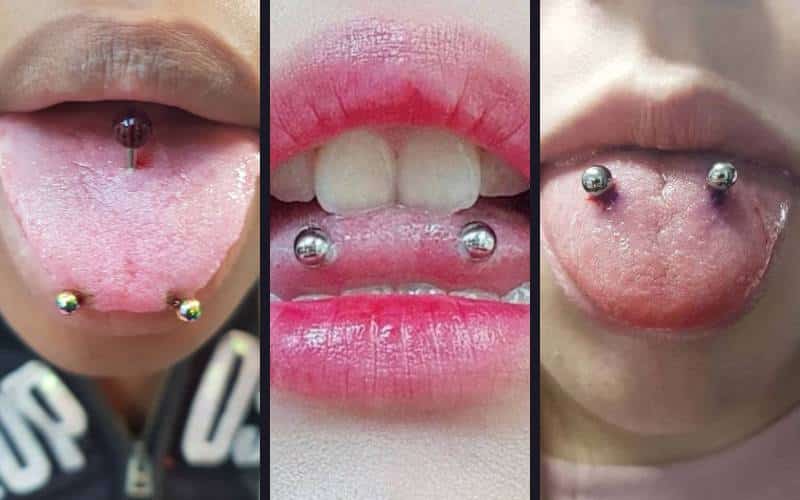
Snake Eye Piercing: The tip of the tongue is pierced, with the jewelry, typically a barbell, resembling the eyes of a snake.
Frog Eyes Piercing: In this style, both sides of the tongue are pierced closer to the tip rather than the middle.
Healing Time and Aftercare for Tongue Piercings
Wondering how long it takes for a tongue piercing to heal? Typically, the duration varies based on the specific location and genetic factors. Experts suggest that the healing process may extend up to 8 weeks. To ensure a smooth recovery, adhere to these precise and cautious tongue piercing aftercare tips:
- Rinse your mouth with a sea salt solution three times a day.
- Avoid touching your piercing with unwashed hands.
- Refrain from smoking.
- For the initial week after the piercing, stick to liquid or soft foods.
- Wait until the piercing is fully healed before attempting to change the jewelry.
Teeth Piercing
If you believe the array of mouth piercings is exhaustive, think again! Teeth piercings are also worth considering.
Tooth Piercing Procedure:
This particular oral piercing is likely one of the least painful. The procedure unfolds as follows:
- The professional initiates the process by cleaning and preparing the enamel using a specialized acid etch.
- A specific dental resin is then applied to the designated piercing area.
- The piercing is carefully positioned as per your preference.
- A special lamp is employed to cure the piercing.
- Voilà! The process is complete.
Tooth piercing precautions and aftercare
A primary precautionary measure to bear in mind is to avoid choosing a ring piercing. This particular piercing involves drilling a hole through a healthy tooth, which can subsequently result in dental complications.
When it comes to aftercare, heed the following advice:
- Maintain your regular oral hygiene routine, but exercise caution with vigorous brushing around the piercing area.
- Refrain from playing with the piercing.
- Avoid consuming spicy foods immediately after the piercing.
- Exercise caution with hot and icy drinks, as they may trigger tooth sensitivity.
Conclusion
As evident from the diverse range, the array of mouth piercings is quite remarkable. Whether you choose conspicuous and unique variations or prefer a more discreet option hidden inside your mouth, both choices are excellent. The key is to ensure proper care for your piercing and allow it the time to heal!
For Other Articles: Lifestylebuz.com


